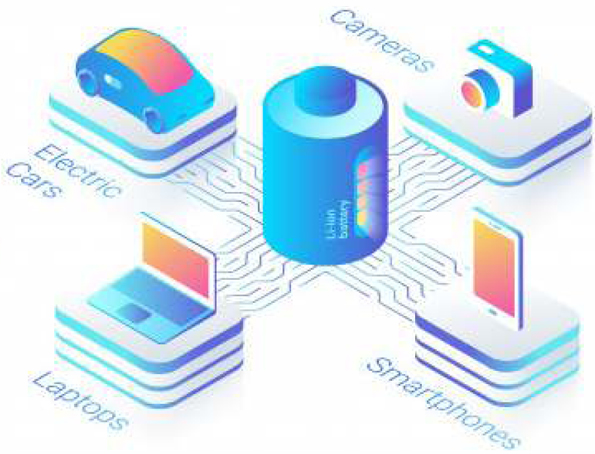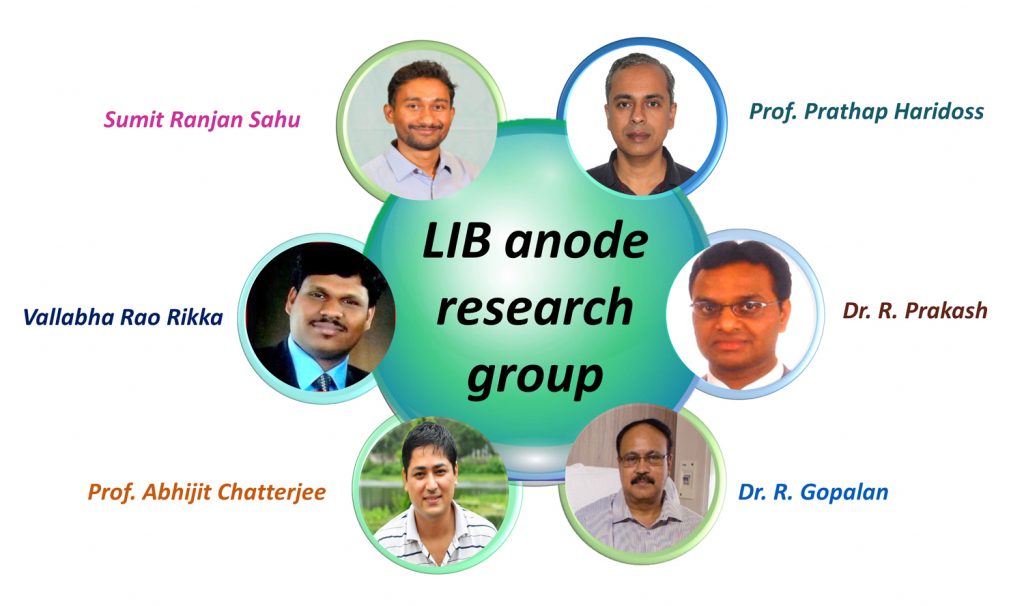As the world has now started to embrace the sustainable way of living, electric devices and vehicles have come under the spotlight as they promise a greener and cleaner future. To run an electric world, scientists across the world are trying to develop durable, reversible, fast charging, high energy storing and longer-lasting batteries. The success of electric vehicles in replacing the current fuel-based vehicles is largely dependent on battery technology. Realizing the role that batteries will play in making an eco-friendly world, the Nobel Prize in Chemistry last year was given to the scientist trio: John B. Good enough, M Stanley Whittingham and Akira Yoshino for their work that led to the development of lithium-ion batteries.
Lithium-ion batteries are currently the backbone of all portable devices. They are being used to power our mobile phones, laptops, tablets, medical equipment and electric vehicles. Like a regular battery, a lithium-ion battery is made up of cathode, anode and electrolyte where the cathode is a lithium-based compound and anode is generally made up of graphite. Graphite is commonly used as an anode because it allows easy movement of lithium ions in and out of its many layers making the batteries rechargeable. Though graphite is being used for more than 30 years as an anode for lithium-ion batteries, it has its own shortcomings. Prof. Prathap Haridoss and his team at IIT Madras in collaboration with Dr. Raju Prakash and Dr. Raghavan Gopalan and their team in ARCI have been working to develop a better anode material for lithium-ion batteries to pave the path for more widespread and extensive use of lithium-ion batteries.
“Graphite, the most widespread anode material for Lithium-ion batteries has got its own practical issues such as lower capacity and limited fast-charging capability. Hence, the current research trend in the area of anode materials is mainly focused on the finding of a novel anode material which can meet all of the aforementioned requirements for assorted applications,” says Prof. Prathap Haridoss, Professor at IIT Madras, while explaining the problems associated with a graphite-based anode.
In their recent research paper, published in the prestigious international journal Advanced Energy Materials, the team has reported the success in developing a better anode material which will enable the fast charging of batteries for electric vehicles and portable electronic devices. The team has utilized molybdenum trioxide in a manner that makes it an effective anode material.
Actually, orthorhombic form of molybdenum trioxide has a high lithium storage capacity and good structural stability making it a choice of material for lithium-ion batteries. However, the high volume expansion during charge-discharge cycles and poor electronic conductivity limits its practical use for developing batteries. To overcome these issues, the team made a composite of molybdenum trioxide nanobelts with carbon nanohorns. Carbon nanohorns basically belong to the family of widely researched carbon nanomaterials which include carbon nanotubes and graphene.

“Carbon nanohorns are part of the family of widely researched nanomaterials, carbon nanotubes and graphene. The flower-like structure of nanohorns is unique. This nanostructure assembly in combination with the properties of cone-like individual nanohorns in the assembly opens up many interesting applications in advanced materials space such as sensors, energy storage, drug delivery and composites. This system is least explored by researchers in the nanomaterials space compared to nanotubes and graphene. Another significant advantage is the simplicity in producing these structures. A simple setup of arcing two graphite rods in open-air atmosphere will yield nanohorns. The electric arc discharge is a well-established technique to produce single-walled carbon nanohorns (SWCNH) in open-air atmosphere,” commented Dr. Joseph Berkmans, Senior Manager at Advanced Materials Petrochemicals at the Reliance Industries Limited, who is an expert in the same field but is not connected to this study.
In this composite anode material, the carbon nanohorns enhance the lithium storage capability of molybdenum trioxide nanobelts by improving its conductivity and also by acting as a lithium storage medium. The flower-like the structure of nanohorns allows for better storage of lithium ions during the electrochemical process and helps for easy diffusion of lithium ions since the spherical aggregates open up enough space between aggregates for the diffusion. All in all, the battery developed using this new anode material displayed superior electrochemical properties, excellent rate capability, and outstanding cycle life. “In this research, the structure and properties of the single-walled carbon nanohorns are effectively utilized to develop state-of-the- art advanced next-generation energy storage device. The potential of the nanohorns are well utilized and synergized with the nanobelts to enhance battery performance. I appreciate this research effort for considering the strengths of the carbon nanohorn assembly synergised with molybdenum trioxide nanobelts in this work for the development of nextgeneration energy storage applications,” adds Dr. Joseph Berkmans.
The team is all geared up for the next phase of the research where they aim to take their work to the market. “The composite anode can be produced on a large scale (several kgs per day). Hence, in the future, we intend to fabricate lithium-ion cells using α-molybdenum trioxide/single-walled carbon nanohorns as an anode in combination with a suitable cathode and demonstrate its performance. A battery pack can also be assembled with the cells and would be used to run an electric vehicle or solar lamp,” says Sumit Ranjan Sahu who is a member of Prof. Haridoss’s team and the first author of the research article.

The team led by Dr. Raghavan Gopalan and Dr. Raju Prakash of ARCI and Prof. Haridoss of IITM, comprised of Sumit Ranjan Sahu, Vallabha Rao Rikka, and Abhijit Chatterjee.
Article by Aditi Jain
Article: https://onlinelibrary.wiley.com/doi/full/10.1002/aenm.202001627










